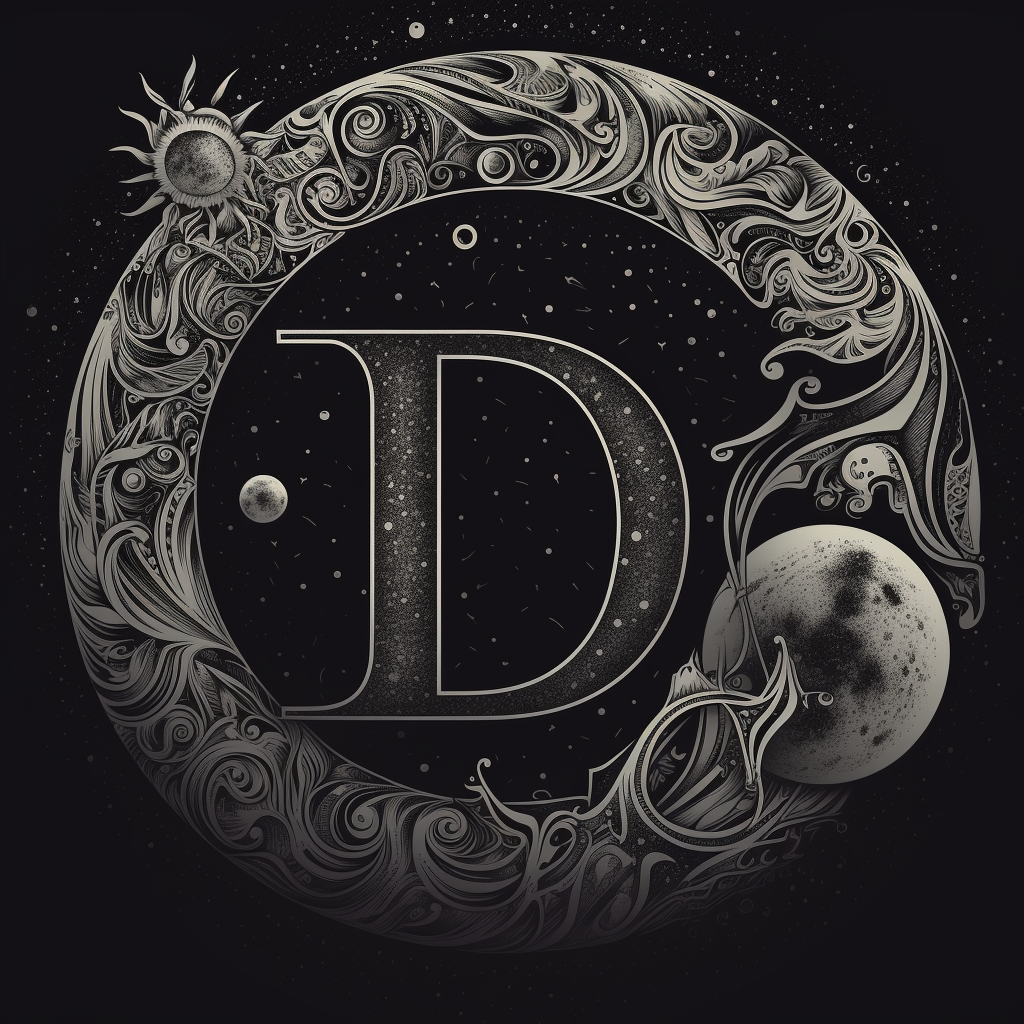The Great Tree
"In the dance of Eldarion Telu's leaves, we see the eternal waltz of time and destiny. Each star is a story, each light a memory of the forest eternal."The Great Tree constellation, known to elves as "Eldarion Telu", is a stunning and expansive celestial formation that dominates the night sky. This constellation, composed of numerous twinkling stars, forms the shape of a majestic tree, symbolizing life, wisdom, and the enduring strength of nature. For the elves, The Great Tree is a sacred symbol, believed to be a celestial mirror of the ancient World Tree, Aeloria, which stands at the heart of their oldest forest. They view its appearance in the night sky as a direct connection to their ancestral spirits and a reminder of their eternal bond with the natural world. The constellation’s appearance during the equinox is particularly significant, marking times of powerful magic and deep reflection. To humans, this constellation holds a different but equally important meaning. It represents growth, both in terms of personal development and the passage of seasons. For farmers and those who rely on the land, the constellation's position in the sky is a guide for agricultural activities. It also signifies hope and endurance, as the tree stands tall and unwavering, even in the harshest of winters. The Great Tree is not just a cluster of stars, it is a symbol interwoven into the cultural and spiritual fabric of both the elves and humans alike. It serves as a reminder of the interconnectedness of all life, the cycle of seasons, and the enduring bond between the people, planet and cosmos.
Geography
Northern Hemisphere Dominance: The Great Tree is primarily a feature of the northern celestial hemisphere. It is situated high in the sky, making it visible from almost every northern land and is particularly prominent during the summer and autumn months.
Alignment with the Celestial Equator: The constellation straddles the celestial equator, allowing it to be seen from both northern and southern hemispheres, though its full majesty is best appreciated from the north. Its positioning means that as the seasons change, different parts of the constellation rise and set, similar to the growth and dormancy cycles of a real tree. In the late spring and summer The Great Tree is waxing and growing and in the autumn and early winter The Great Tree is waning and shrinking.
Proximity to Other Constellations: The Great Tree is neighbored by constellations that are also rich in lore and significance. To the east, is the constellation of The Wandering Stag, symbolizing exploration and adventure. To the west lies the constellation of The Silent Harp, associated with art, music, and lost love.
Guiding Star: The constellation's most luminous star, known as "Mircea’s Beacon," aligns with the north at sunset on the Autumnal Equinox, serving as a guide for travelers and sailors. This star is said to be the heart of The Great Tree, pulsating with a light that inspires hope and guidance.
Lost Elven Lands: In ancient times, before the Sundering, the very base of the constellation was said to be centered just above the lost elven World Tree, Aeloria. Many still use this constellation as a guide to try and find Elamanala, the lost homeland of the ancient elves.
"Under the boughs of The Great Tree in the heavens, one finds guidance. Its roots plunge deep into the past, and its branches reach into the future."
History
The history of The Great Tree constellation is steeped in myth, magic, and ancient lore, intertwining the destinies of the stars with the inhabitants of the land.
Ancient Origins: The Great Tree, or "Eldarion Telu" as it's known to the elves, is believed to have appeared in the skies at the dawn of time. According to elven legend, the constellation was created by the goddess, Mircea, Guardian of Forest Plants and Animals, and the patron of wisdom. She cast this group of stars into the night sky to guide and protect her children and their watchers, the elves.
The Age of Starlight: During this era, the elves first learned to interpret the patterns of the stars. They discovered that The Great Tree's position and brightness varied with the seasons and began to use it for navigation and to mark the passage of time. The constellation became a central part of their culture and spiritual practices. Additional constellations and study brought forth the first Star Magic as well.
The Human Dawn: When humans arrived in Domen Aria, they were taught by the elves to read the stars. The Great Tree soon became integral to human agriculture, its phases indicating the time for planting and harvesting. Over time, it also found a place in human folklore and religion, symbolizing endurance and growth.
The Time of Shadows: In an ancient, darker period of history, when a great evil swept across the land, it is said that The Great Tree constellation dimmed in the night sky. This was perceived as a sign of the goddess’ displeasure and served as a rallying symbol for the forces of good.
The Era of Reconciliation: After the darkness was vanquished, the constellation shone brighter than ever. This was interpreted as a sign of renewal and hope. The Great Tree became a symbol of unity between elves and humans, with festivals and ceremonies held under its auspicious light.
Modern Times: Today, The Great Tree remains a symbol of deep significance. It features prominently in art, literature, and in the night time rituals of both elves and humans. Its appearance in the night sky is celebrated, and its movements are closely observed, interpreted, and believed to foretell events of great importance.
"As The Great Tree stands firm in the winds of change, so must we. Its enduring presence is a reminder that we too, can weather the storms of our time."
Alternative Name(s)
It is most often called "The Great Tree" by humans and "Eldarion Telu" by Elves.
"My mother says that every star in The Great Tree is a goodnight kiss from the sky. When I can't sleep, I count them until dreams take me away."







Very nice idea and very cool to give a rundown on the different depictions of the constellation throughout historie and species!
I Like it!
-Worldanvils: Institutions of Learning
-Worldanvils: SUMMER CAMP
Thank you. There are a lot of stars in the sky. I may have to do a lot more of these constellation articles in the future.
Good luck with that. May the Stars Guide your ways and May the moon shine upon this path! ^^
-Worldanvils: Institutions of Learning
-Worldanvils: SUMMER CAMP